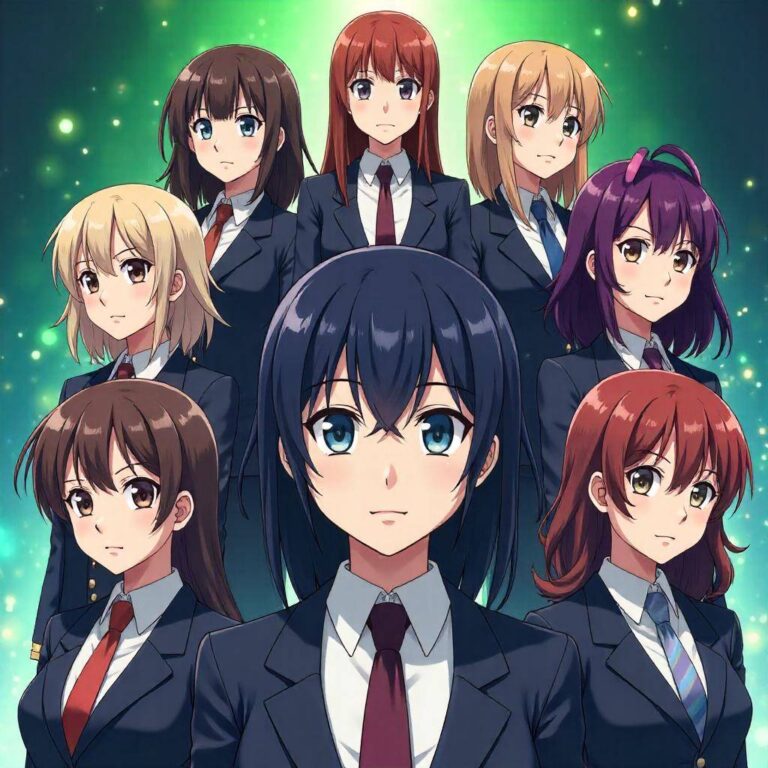Reader’s Question:
I have a question about Gundam. I’m a high school student and I’ve watched the entire Gundam series, but I’ve heard some people say they don’t like “The Witch from Mercury” and “Gundam G” because they have female protagonists. Why is that? Personally, I think both series are great,
and I wish “The Witch from Mercury” had around 50 episodes because it’s so interesting. Why do some people have an issue with female protagonists?
Understanding the Divergence of Opinions on Female Protagonists in Gundam: A Psychological and Cultural Analysis
The Gundam franchise, renowned for its intricate narratives and thematic depth, has persistently pushed the boundaries of storytelling within the mecha genre. The recent installments, particularly “The Witch from Mercury” and “Gundam G,” have sparked a polarized discourse among fans, notably surrounding the use of female protagonists. Some individuals express their dissatisfaction based on traditional gender roles or preconceived notions about masculinity within the Gundam universe. In this analysis, we will explore the psychological and sociocultural dimensions that underpin these opinions, while also considering the legal and ethical ramifications for creators in the anime industry.
Background Context: The Evolution of Gundam
The Gundam series began in the late 1970s with “Mobile Suit Gundam,” which introduced audiences to a narrative that explored the horrors of war through the lens of mecha battles. Traditionally, the protagonists have been male, often embodying archetypal traits such as bravery, sacrifice, and leadership. Over the years, the franchise has evolved, with narrative complexity allowing for the exploration of diverse characters and themes, including the role of women in warfare and society. However, as seen in the viewer responses regarding “The Witch from Mercury,” the introduction of female protagonists has drawn criticisms rooted in cultural stereotypes. The comments reflect a broader societal conversation about gender representation in media, particularly in genres that have historically been male-dominated.
Industry Analysis: Gender Representation in Anime
The discussion surrounding gender representation in anime is multifaceted. Historically, anime has been reflective of societal norms and values. The portrayal of female characters often oscillates between empowerment and objectification. In the case of Gundam, the incorporation of female protagonists signifies a progressive shift; however, it is also met with resistance from segments of the audience who are uncomfortable with this change. Cultural expectations play a significant role in shaping perceptions. The sentiment that “Gundam is for boys” reflects a broader stereotype that positions certain genres as exclusively masculine. This notion can be traced back to traditional gender roles, which dictate that combat and leadership are inherently male domains. Yet, as society progresses, these roles are increasingly challenged, creating friction between long-standing beliefs and evolving cultural values.
Character Psychology: The Dynamics of Protagonist Representation
In analyzing character psychology, it is crucial to consider the archetypes that audiences are accustomed to. Male protagonists in Gundam often embody traits associated with heroism, such as resilience and courage. The resistance towards female protagonists may stem from a psychological discomfort with altering these archetypes. Many viewers may find it easier to relate to male characters due to societal conditioning. Moreover, the comment referencing the notion that “females should not bear the burden of warfare” signifies a deeper psychological perspective. This sentiment reflects an ingrained belief system where vulnerability is viewed as a weakness, particularly in women. The expectation that female characters should experience happiness and avoid hardship can limit the narrative possibilities for character development. It raises ethical questions about how female protagonists are developed and the contexts in which they operate. To illustrate this point, consider iconic female characters in other anime genres, such as Mikasa from “Attack on Titan” or Erza from “Fairy Tail.” These characters experience significant trauma yet emerge as powerful figures. They challenge the notion that femininity equates to fragility and demonstrate that the narrative potential for female characters is extensive, particularly within genres that explore conflict.
Storytelling Ethics: Balancing Representation and Audience Expectations
From a storytelling perspective, the ethical consideration of representation is paramount. Creators must navigate the delicate balance of honoring the franchise’s legacy while pushing boundaries. Viewer resistance can sometimes stem from a lack of familiarity or a fear of change, which underscores the importance of thoughtful character development that resonates with a broad audience. Critically, this raises a question: how can creators ensure that female protagonists are portrayed authentically and compellingly? One actionable approach is to involve diverse voices in the creative process. By empowering female writers, directors, and producers, the representation of female characters can be enriched with nuanced perspectives that reflect the complexities of their experiences. Consider the impact of introducing female characters who are not merely parallels to male protagonists but who have distinct motivations and narratives. Characters like Suletta from “The Witch from Mercury” or Domon from “Gundam G” can be developed with their own arcs, allowing them to embody unique traits that both challenge and complement traditional archetypes.
Cultural Impact: The Ripple Effects of Representation
The representation of female protagonists in Gundam extends beyond the screen; it influences cultural discourse around gender roles and expectations. The backlash against these characters can serve as a reflection of broader societal anxieties regarding gender equality and the shifting dynamics of power. Importantly, the impact of anime as a medium is profound. As a global phenomenon, the messages conveyed through narratives can shape perceptions and ideologies. The resistance to female protagonists may inadvertently reinforce harmful stereotypes that prioritize traditional masculinity over the empowerment of all genders. Moreover, addressing these sentiments through constructive dialogue can foster understanding and acceptance. Engaging in discussions about the significance of female representation in anime can lead to a richer appreciation for diverse narratives and characters.
Practical Insights for Creators and Viewers
For creators, the imperative to craft inclusive narratives is more pressing than ever. Here are several practical insights to consider: 1. Embrace Diversity in Storytelling: Involve writers and creators from various backgrounds to provide authenticity in character development. This enhances the depth and relatability of female protagonists. 2. Challenge Archetypes: Instead of conforming to traditional gender roles, create characters who defy expectations and present multi-dimensional personalities. This can help dismantle stereotypes and encourage viewers to expand their understanding of gender representation in media. 3. Foster Community Dialogue: Create platforms for constructive discussions among fans. Encourage open conversations about gender representation and the evolution of characters, allowing viewers to share their perspectives while respecting differing opinions. 4. Conduct Audience Research: Engage with the audience to understand their expectations and concerns. This can guide creators in developing narratives that resonate with viewers while challenging preconceived notions. 5. Celebrate Unique Narratives: Highlight the individuality of each Gundam series and its characters. Emphasize that diversity in storytelling enriches the overall experience and offers new insights into the complexities of human experiences. For viewers, the following takeaways can enhance their engagement with anime: 1. Broaden Perspectives: Approach new narratives with an open mind, recognizing that change can lead to richer storytelling experiences. 2. Engage with Content Critically: Reflect on personal biases and consider how societal norms shape perceptions of characters. This can foster empathy and understanding. 3. Support Diverse Narratives: Actively seek out and support anime featuring diverse characters and themes, reinforcing the demand for inclusive storytelling. 4. Share Experiences: Engage with fellow fans to discuss perspectives on representation. This not only enhances the viewing experience but also promotes a culture of inclusivity.
Conclusion: The Path Forward
The discourse surrounding female protagonists in Gundam is emblematic of broader societal challenges regarding gender representation in media. While some audiences express resistance based on traditional values, it is essential to recognize the evolution of narratives that reflect contemporary realities. By embracing diversity and challenging archetypal representations, creators can forge new paths in storytelling that resonate with a wider audience. As viewers, fostering understanding and appreciation for diverse narratives can cultivate a richer cultural landscape in anime. Ultimately, the journey toward inclusive representation is ongoing, and it requires collaboration, dialogue, and a willingness to embrace change. I invite you, dear readers, to share your thoughts and experiences regarding female protagonists in anime. How do these representations impact your views on gender and storytelling? Your insights are invaluable to this continuing conversation.



